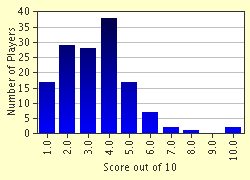Quiz Answer Key and Fun Facts
1. There's an intimate connection between Handel's 1724 opera "Tamerlane" and...
2. Messiaen's "Quartet for the End of Time" (1941) couldn't have been written without...
3. You'd definitely mention these two in the same breath: the second movement of Samuel Barber's String Quartet op.11 (1936) and...
4. "Les Sauvages" from Rameau's 1728 "New book of pieces for harpsichord" has an intimate connection with...
5. William Byrd's verse anthem "Teach me, O Lord, the way of thy statutes" is the inevitable consequence of...
6. The song "There'll be bluebirds over the White Cliffs of Dover" wasn't possible without...
7. No-one could mistake the connection between Handel's aria "I know that my Redeemer liveth" from his oratorio "Messiah" and...
8. The last movement of Beethoven's 9th Symphony in D minor, the "Choral", is just like...
9. Bruckner's 9th Symphony in D minor couldn't possibly have been written without...
10. Handel's "Chandos Anthems" are intimately connected with...
Source: Author
anselm
This quiz was reviewed by FunTrivia editor
Bruyere before going online.
Any errors found in FunTrivia content are routinely corrected through our feedback system.


